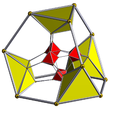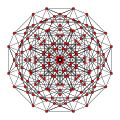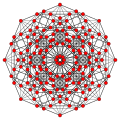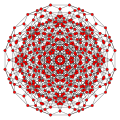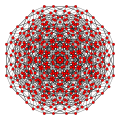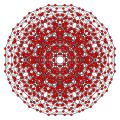| Truncated 5-demicube Cantic 5-cube | |
|---|---|
 D5 Coxeter plane projection | |
| Type | uniform 5-polytope |
| Schläfli symbol | h2{4,3,3,3} t{3,32,1} |
| Coxeter-Dynkin diagram | |
| 4-faces | 42 total: 16 r{3,3,3} 16 t{3,3,3} 10 t{3,3,4} |
| Cells | 280 total: 80 {3,3} 120 t{3,3} 80 {3,4} |
| Faces | 640 total: 480 {3} 160 {6} |
| Edges | 560 |
| Vertices | 160 |
| Vertex figure |  ( )v{ }×{3} |
| Coxeter groups | D5, [32,1,1] |
| Properties | convex |
In geometry of five dimensions or higher, a cantic 5-cube, cantihalf 5-cube, truncated 5-demicube is a uniform 5-polytope, being a truncation of the 5-demicube. It has half the vertices of a cantellated 5-cube.







